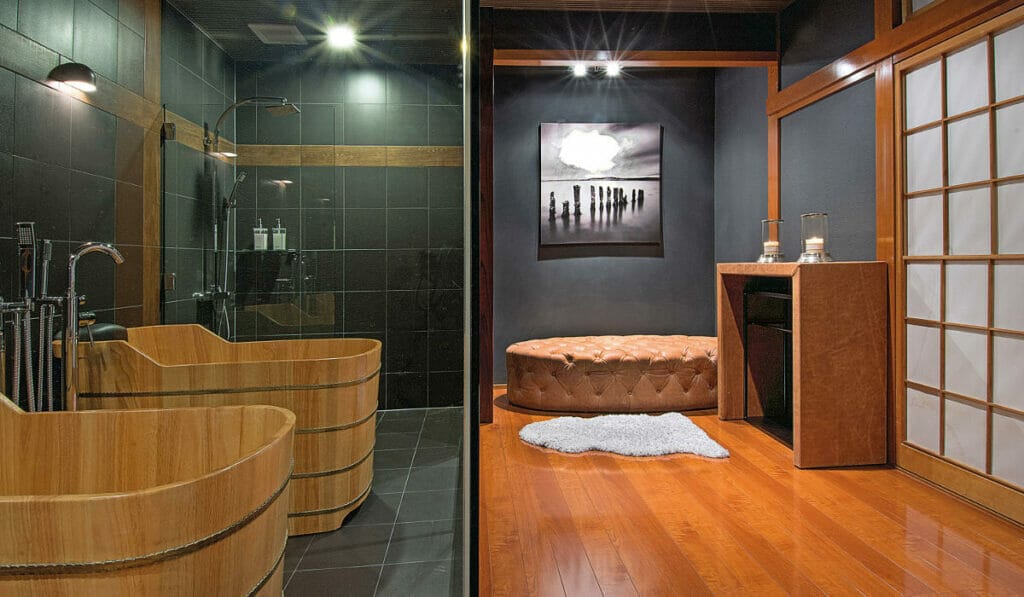When work took designer Nikki Hunt to the ski town of Hakuba, Japan, building her own holiday retreat was the last thing on her mind. However, while converting a small hotel into a luxury ski chalet for a local client, Hunt found herself increasing enamoured of the area. “I like that it is relatively close to Tokyo and so easy to get to. The skiing is fantastic and the food is out of this world,†she says. A 100-minute journey on the Shinkansen, followed by an hour’s drive, is all it takes to transport visitors from Tokyo to one of Japan’s most popular ski areas, one which played host to the 1998 Nagano Winter Olympics.

KEEN EYE Nikki Hunt, founder and principal of Design Intervention.
“What I like most about the area is that it retains a Japanese feel, unlike some resorts that have become so touristy,†says Hunt. So, when a run-down bed and breakfast came on the market in 2010, the founder and principal of Singapore-based interior design firm Design Intervention seized the chance to transform it into a winter retreat.

ZEN ELEMENTS Shoji screens, traditionally featuring translucent paper mounted on wooden frames, dress the windows.
Renovation work to convert the 8,000 sq ft 13-room property luxury chalet began in April that year and concluded by November. “Japan is very efficient and the builders work very fast. As the snowfall in the area averages 11m annually, the workers had to complete their work in one summer season before the snow arrive,†says Hunt, who designed the new home with family and friends in mind. While the property features spacious common areas such as a living room, dining room and games area, the five bedrooms with ensuite bathrooms allow guests to retreat into their own quiet spaces.
When designing the chalet, she paid special attention to spaces that would allow friends and family to relax and unwind after a day of hitting the slopes. In the cinema room, plush, custom-made sofas arranged in tiers allow guests to lounge in comfort, while enjoying unblocked views of the screen. A Japanese-style bathroom, decked out in warm-hued timber, is anchored by two cedar bathtubs – designed with headrests – for long, languid soaks.

STEAMY AFFAIR Japanese-style bathrooms with cedar bathtubs.
While the space offers all the modern creature comforts of a 21st century ski lodge, ranging from fur throws to luxurious deep-pile carpets, it co-exists with elements of Japanese interior architecture. The existing wood floor was retained, polished and revarnished to restore it to its former glory. Shoji screens, traditionally featuring translucent paper mounted on wooden frames, dress the windows.
While the property is structurally sound, its traditional Japanese construction proved to be a challenge. For instance, the building is held up by a network of wooden posts and beams. As such, knocking down walls to achieve a more open floor plan would leave structures standing awkwardly in the middle of the new rooms. Instead of removing the posts and compromising the building’s structural integrity, Hunt disguised them as aesthetic features by staining the wood black and highlighting it with spotlights.

PLUSH RETREATS Hunt designed her vacation home – it has a cinema room featuring customised sofas – with friends and family in mind.
For Hunt, who returns here with family and friends four times a year, this mountain abode has grown into more than just a home away from home. “When we walk through the door and find ourselves surrounded by treasured mementos and family photos, it does feel like we’re coming home. However, we are a million miles away from work, school, meetings and traffic. We come here to be with one another without distraction, and when we are, we find ourselves truly together in the real sense of the word.â€



